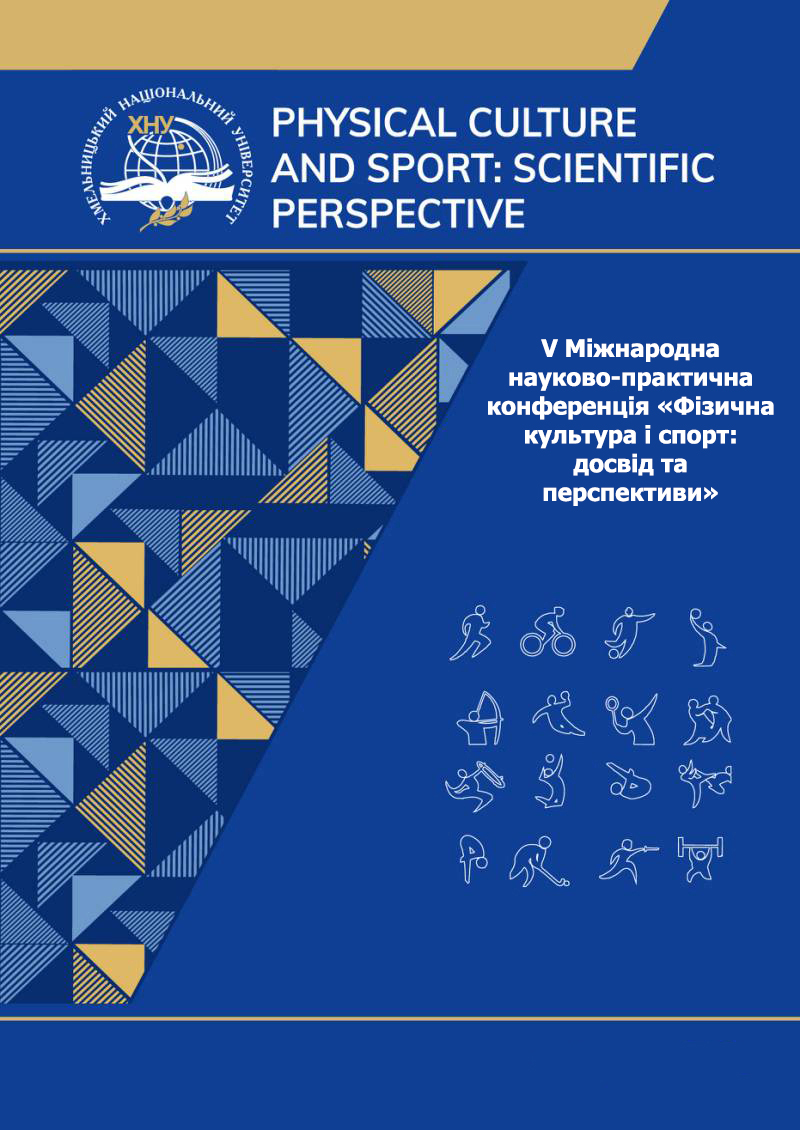RHYTHMIC GYMNASTICS CLASSES UNDER THE HEALTH AND RECREATION PROGRAM FOR CHILDREN 5-6 YEARS OLD
DOI:
https://doi.org/10.31891/pcs.2025.1(1).19Keywords:
motor activity, health and recreation direction, skills, abilities, harmonious development, meansAbstract
Rhythmic gymnastics classes for young gymnasts are of great importance in connection with early specialization and involvement in classes of children 5-6 years old. Analysis of scientific and methodological literature shows that in recent decades, gymnastics has undergone significant changes associated with an increase in the complexity and risk of the exercises performed, on the one hand, and a sharp rejuvenation of the composition of those involved. The problem of early specialization dictates its requirements for the methodology and physical fitness of children. The introduction of rhythmic gymnastics means of the health and recreational direction is determined because rhythmic gymnastics exercises are a universal means of forming a culture of movements for children of different age categories. The use of elements of rhythmic gymnastics of the health and recreational direction for children 5-6 years old, as a means and form of organizing the physical and psychological development of the child, creates conditions for the humanization of the pedagogical process, transforming the child from an object of socio-pedagogical influence into a subject of active creative activity. We created a program for an experimental group of children 5-6 years old, which is based on the means of rhythmic gymnastics and is designed not only to increase the level of motor activity of participants in everyday life, but also to promote their physical harmonious development and positively influence the formation of their personality, which became the subject of our study.
The goal of the program is to improve physical qualities and abilities, to form healthy and harmonious development of girls 5-6 years old by means of rhythmic gymnastics of the health and recreational direction. Results According to the average values obtained at the beginning and end of the experiment, it can be seen that there was an improvement in speed-strength and coordination abilities, the level of flexibility and mobility in the joints. According to the program we developed, we can note its effective impact on the physical fitness and harmonious development of girls aged 5-6.
References
Andreeva O.F. Fundamentals of rhythmic gymnastics: monograph. Kyiv: Molod, 1998. 120 p.
Baginska O.V. The ability to maintain balance in children of primary school age as an indicator of the development of their motor function in the process of teaching physical culture. Scientific Journal of the National Pedagogical University named after M. P. Dragomanov. 2014. No. 15 (44). P. 53-56.
Gonchar L.V. Introduction of rhythmic gymnastics means into the process of physical education of preschool children for the formation of a culture of movements of children of senior preschool age. Scientific Journal of the Ukrainian State University named after Mykhailo Dragomanov. 2021. No. 15 (129). P. 18-23.
Duditska S.P., Semal N.V. The use of flexibility exercises in the process of rhythmic gymnastics classes at the stage of initial training. PHYSICAL CULTURE AND SPORT: SCIENTIFIC PERSPECTIVE. 2024. No. 1 Volume 1. P. 46-54.
Stepanenko Yu.O., Radzievsky V.P., Baginska O.V., Vakhnenko V.S. Technology for developing static-dynamic stability in rhythmic gymnasts at the stage of initial training. Current problems of modern biomechanics of physical education and sports: Materials of the XI International Scientific Conference in Memory of Anatoly Nikolaevich Laputin. 2018. P. 170-173.
Downloads
Published
How to Cite
Issue
Section
License
Copyright (c) 2025 Світлана ДУДІЦЬКА

This work is licensed under a Creative Commons Attribution 4.0 International License.





